Showing 31–40 of 196 results
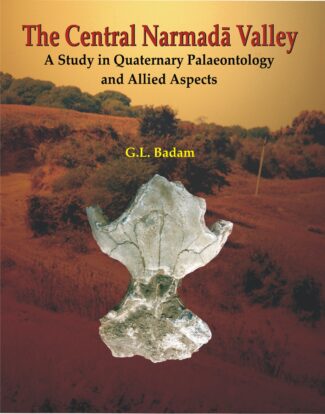
The book is the first attempt at studying a small stretch of the Narmada Valley from a multidisciplinary point of view incorporating the results of archaeology, geology, palaeontology and taphonomy. The modern analogies attempt to build up a palaeoecological model for Narmada and its surrounding areas including the rock shelter sites.
The book The Central Narmada Valley: A Study in Quaternary Palaeontology and Allied Aspects is the first attempt at studying a small stretch of the valley from a multidisciplinary point of view incorporating the results of archaeology, geology, palaeontology and taphonomy. New techniques and parameters have been applied to study and re-interpret these areas. This book also summarizes the morphology, distribution pattern and evolutionary history of certain extinct animals in relation to cultural development. With the help of modern analogies, the book attempts to build up a palaeoecological model for Narmada and its surrounding areas including some of the rock shelter sites. The book extends the dimensions of understanding the life history of Narmada and its tributaries, not only by discovering and reinterpreting various biological and cultural events, but also by seeking to understand varied aspects like river behaviour, flood history and man-land relationship during the past. The book should prove useful to students and researchers of river valley cultures in general and to those of Narmada Valley in particular.

Based on diverse original sources, this is a well-knit narrative delineating Chandragupta Mauryas personality, his times, and his meteoric rise to political supremacy with contextual focus on polity, religion, society, economy, literature and arts.
A Ksatriya hero of little-known antecedents, Chandragupta Maurya was unmistakably a born leader of men, who within twentyfour years of his reign: 317 bc-293 bc, established a gigantic empire by not only unifying the countless fragments of a distracted India, but annexing some of the erstwhile Persian dominions as well. Professor Bhargava here profiles this first historical emperor of India, in all essential detail. Based on diverse original sources, notably, Brahmanical, Buddhist, Jaina, and Greek, the book sets out a fascinating, well-knit narrative delineating Chandragupta Maurya: the man, his times, and his meteoric rise to political supremacy with contextual focus on the state of polity, administrative mechanisms, religion, society, economy, literature and arts during his rule. The author also tries to apply correctives to the myths woven around Chandragupta in legend, literature, and chronicles. Acclaimed alike by historians and Indological journals of repute, Dr. Bhargavas book is now in its second edition: enlarged and thoroughly revised against the backdrop of the latest research findings.
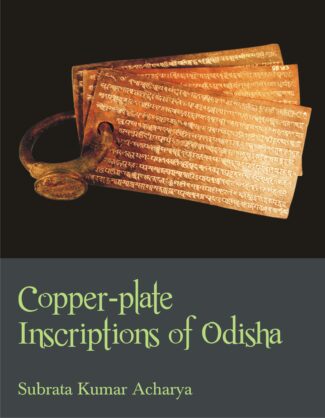
This catalogue of more than 400 copper-plate inscriptions of Odisha from the fourth to the sixteenth century ce furnishes the detailed information about the rulers and the beneficiaries, religious persuasion of the kings, occasion and purpose of the land grants, eras and other astronomical details, numerical systems, development of language and script, administrative and revenue terms, etc.
Odisha is well known for its epigraphical wealth. More than 400 copper-plate grants and 1,000 stone inscriptions ranging from the fourth to the sixteenth century ce have been discovered so far. In this volume, the author has taken extreme care in documenting all the published and unpublished copper-plate grants including the stray plates, spurious charters and the palimpsests.
These epigraphs are grouped under different dynasties and the relevant data in each copper-plate inscription have been systematically classified making the volume a descriptive catalogue of the copper-plate inscriptions of Odisha. It, thus, painstakingly furnishes detailed information about the rulers and the beneficiaries, religious persuasion of kings, occasion and purpose of the grants, eras and other astronomical details, officers and persons present at the time of the grants, rights and privileges transferred to the donees, land measures, prevailing currency system of the period, administrative and revenue terms, topographical details, development of language and scripts, and so on. These inscriptions, mostly in Sanskrit, also delineate the system of numeration while specifying the era or days of a month, amount of tax to be paid, land measures, etc.
While adopting a comprehensive approach in treating the subject, the book deals with the technique of preparing copper plates for writing the royal deeds; flattening of the metal sheets into rectangular plates, their sizes, positing of the seals, the symbols and legends on the seals, amidst many more pieces of information.
This innovative and scholarly work should entice the spirit of students, historians and researchers, especially those who are interested in the history and culture of Odisha. The bibliographical details furnished in the volume will prove to be of immense help to serious scholars working in the field.
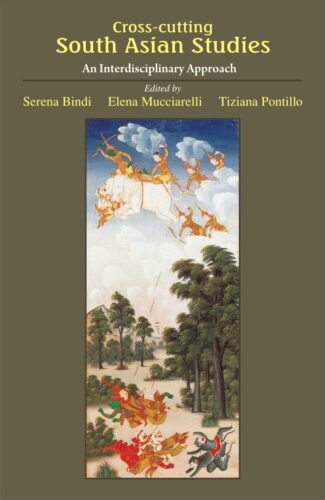
This volume deals with different issues related to religious practices and institutions in South Asia. It further seeks to substantiate the well-known opposition between the so-called orthodox sovereignty and the heterodox one, of which the so-called vratya-power seems to be a prime example.
This volume, Cross-cutting South Asian Studies: An Interdisciplinary Approach focuses on two themes that are central to Indological studies: religious practices and heterodox sovereignty.
The first part of this volume The Indian Ocean of Religious Practices: Past and Present deals with different issues related to religious practices and institutions in South Asia. These contributions share a similar theoretical perspective on religion: they all highlight, in various ways and through different disciplinary approaches, how, in order to fully understand religious practices and their inherent dynamics, it is essential to consider the power relations that continually imbue and shape them.
The second part Kings, Priests and Prominent Roles Interpreted through the Visual, Literary, Speculative, and Technical Indian Arts seeks to substantiate the well-known opposition between the so-called orthodox sovereignty and the heterodox one, of which the so-called vratya-power seems to be a prime example. Therefore, the target of the relevant contributions consists in focusing on different contexts where the king or chieftain, or merely the patron of the sacrifice, gains his temporary pre-eminence in an agonistic way which includes an important non-permanent ascetic dimension.
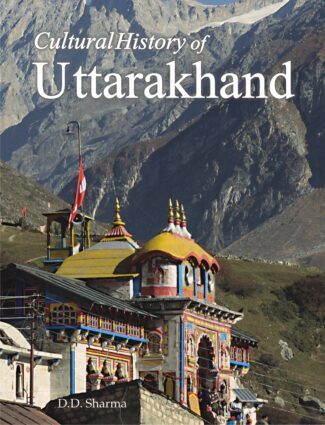
This book gives a comprehensive account of the various aspects of the cultural history of the various tribes and races and the significant historical incidents that have taken place in their lives in the central Himalayan region, particularly in Uttrakhand.
Cultural History of Uttarakhand is an out-come of many years of keen observation of the linguistic and cultural phenomena of the whole Himalayan region, right from Ladakh in the west to Bhutan in the east and an intensive study of ancient Indian literature and of the historical incidents that have taken place in these Central Himalayan regions, particularly in the land termed as Uttarakhand. Though there are some works, both in Hindi and English, on the history and culture of this land, they pertain either to a specific region or to some particular aspect of it. This is for the first time that exhaustive chronological accounts of the history and culture of the inhabitants of Uttarakhand, including various ancient and modern tribes and races, right from Tons and Yamuna in the west to Mahakali/Sarada in the east, and from Bhotantic Himalayan regions in the north to Tarai-Bhabar area in the south, considered to be a `Cultural Area’ of Uttarakhand, have been taken into account for this study, in which an effort has been made to unfold various layers of the history of this land in a comprehensive way.
As such, this volume on the Cultural History of Uttarakhand is supposed to provide a rare opportunity to students, as well as to readers in general, to have an intimate knowledge of various aspects of the cultural history of various tribes and races inhabiting Uttarakhand from pre-historic periods to modern times.
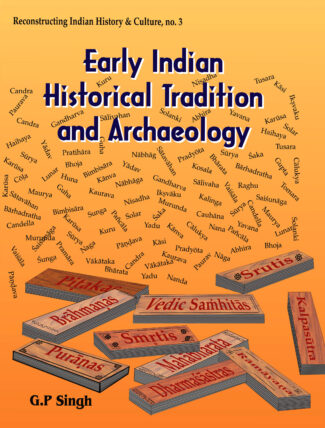
Surveying the whole extent of Itihasa-Purana and sifting facts from myths, the book reconstructs millennia of ancient Indias political-cultural history (pre-Bharata war days to about ad 1200), with chronological details of all kingdoms that ruled.
In mankinds history, Indias is the longest literary tradition so ancient that it cannot be illustrated either by con- temporary books or from monuments. The Rigveda, indisputably the oldest literary work, was written at a time when many a great, old-world civilization lay in the wombs of futurity. And almost equal is the antiquity of the Puranas which, considered as the fifth Veda, figure distinguishedly among the traditional sources: Vedic Samhitas, Brahmanas, Srutis and Smritis, Dharmashastras, epics (the Ramayana and the Mahabharata), tantra manuals, and myriad Buddhist and Jaina texts, that have helped historiographers unravel the landmarks in the subcontinental civilization. Bulky and often crowded with legendary, religious and philosophical matters of various kinds, the PURANAS record the genealogies of Hindu deities, the reigns of the Manus, and chronicles of Solar, Lunar and other ancient dynasties. Professor G.P. Singh tries afresh to establish their historicity, surveying the whole extent of Itihasa-Purana: the early Indian historical tradition, founded on the Puranic literature. Meticulously sifting facts from myths, legends, and philosophic reflections in this monumental corpus of yore, the book reconstructs millennia of ancient Indias political and cultural history: from the pre-Bhrata War days to about 1200 ad (the post-Harsha period) with both genealogical and chronological details of all dynasties/ kingdoms that rose and fell in different regions of the Indian subcontinent. Contextually, the author analyses threadbare the Puranic evidence to also review the date of the Mahabharata War. In thematically exploring the historicity of all different Puranas, Dr. Singh is at pains to show how far the Puranic accounts are validated by other traditional writings on the one hand, and archaeological evidence on the other. With prolific bibliographic references and a number of chronological genealogical tables, his book will interest the scholars/ researchers of Indology, ancient Indian history and archaeology.

This work attempts to show that the coastlands were cultural melting pots, mediating, absorbing and often transcending the art of the interiors, i.e. the classical schools of Indian sculptural art at Mathura, Gandhara and Sarnath. The discussions in the nine chapters cover a broad range of sculptural art created in the Indian littoral regions between 300 bce and ce 500.
Scholars of early Indian art traditions have mostly viewed the coastlands as being marginal to the cultural efflorescences that happened in the interiors of the subcontinent. The classical schools of Indian sculptural art which blossomed at Mathura, Gandhara and Sarnath in the first half of the first millennium ce, have become axioms in the study of early Indian sculptural art. No discussion on early sculptural art can be complete without allusion to one or other of the schools. This work attempts to show that the coastlands, while influenced by the great schools of art, were nevertheless cultural melting pots in their own right, often transcending the art of the interiors. As staging areas of long distance maritime exchanges, the Indian coastlands have long mediated between the far civilizations of the Indian Ocean world (Egyptian, Arabian, Persian, East African and Southeast Asian) and the Indic cultural sphere. The coastlands are viewed as cross-cultural realms, places most conducive for absorption of new ideas and for syncretic manifestations. The discussions in the nine chapters cover a broad range of sculptural art created in the Indian littoral regions between 300 bce and ce 500. These include friezes in the rock cut caves of the Western and Eastern Ghats, decorated pillar capitals and free standing creations in stone and terracotta. Many of the observations are based on the author’s fieldwork on the Indian coastlands. Cover photo: Yakua image of stone inside a sacred grove in Haigunda Island, Uttar Kannada Dist., Karnataka, 4th century ce.
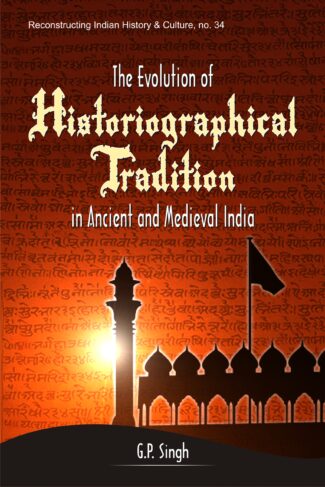
This volume attempts to present a systematic and comprehensive history of historical writing in ancient and medieval India. It discusses the beginnings of historical tradition, Buddhist and Jain traditions of historiography, writing of historical biography, chronicles, va§÷àvalã, and the tradition of historical writing in all states of India.
In India, historical writing was a tradition that evolved in different ways in the ancient, medieval and modern periods of history. Several traditions of historiography evolved during the centuries. This volume is an attempt to present a systematic and comprehensive history of historical writing in ancient and medieval India based on many original sources and works written in the modern times.
A well-researched, painstaking study, the book broadly discusses the beginnings of historical tradition, Buddhist and Jain traditions of historiography, and writing of historical biography, chronicles, vamsavali and other historical works, as well as the tradition of historical writing in South India. One of its main concerns is to bring out the contributions of people of different religions to the evolution of the tradition of historiography. It sheds light on the historical and semi-historical works of ancient and medieval historians of Indians to dispel the argument that ancient Indians had no tradition of historiography. It shows that ancient Indians had indeed a clear conception and perception of history, taking history as the soul of the nation. It states that conscious of the fact that the culture and civilisation of a country got reflected through its history, they took pains to preserve the historical records of the past.
The book will prove extremely useful to fill the vacuum existing in our knowledge about historians and historiography in ancient and medieval India.
Exploring Medieval India through Persian Sources revisits medieval Indian history through eleven authoritative and resourceful papers presented in a national seminar held at the Department of History, Aligarh Muslim University in 2016 by scholars of repute. The Persian sources include political chronicles, biographical accounts, Insha literature, mystic literature (malfuzat, maktubat, etc.), dastur of Amal, farmans, nishan, parwana, foreigners’ accounts, vernacular literature, epigraphy, numismatic, archaeology and paintings.
These papers should generate interest among the researchers to further showcase the world many a facet of India’s unknown intellect and history.
| There are no products |